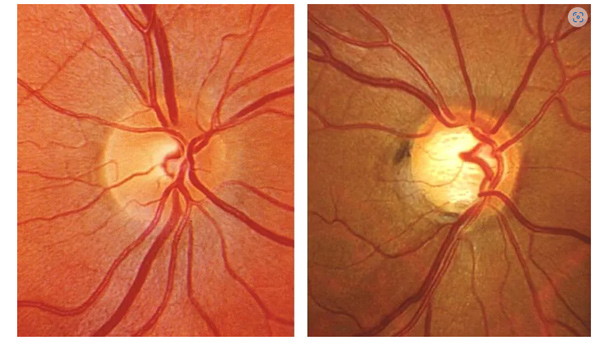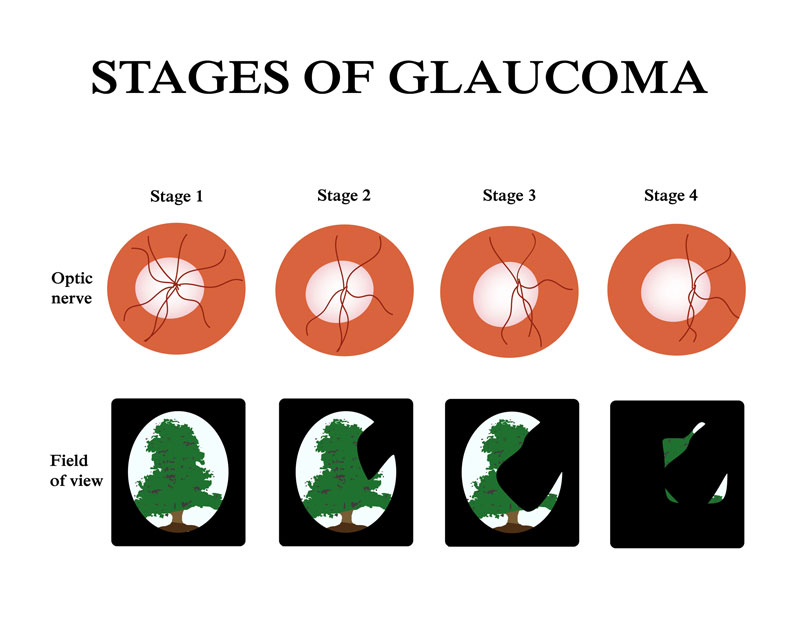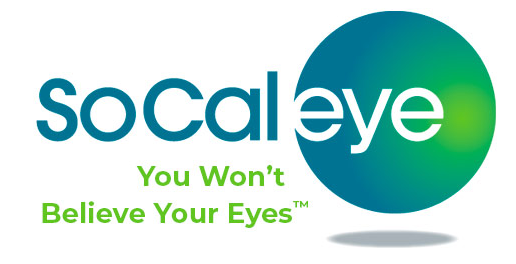What does a Glaucoma Diagnosis mean?
Glaucoma is a complex and potentially sight-threatening eye condition that affects millions of people worldwide. A diagnosis of glaucoma signifies the presence of a group of a disease that requires ongoing monitoring and management to preserve the patient’s vision. The good news is that early detection and ongoing management can slow the progression of this condition.
Overview of Glaucoma:
The word “glaucoma” is derived from the Greek word “glaukos,” meaning “gray” or “greenish-blue,” which describes the color change that can occur in the eye when the condition is advanced.
Glaucoma is typically a progressive disease that develops slowly over time and is often associated with damage to the optic nerve. It develops by the accumulation of eye fluid, known as “aqueous humor,” which travels down a drain known as “trabecular meshwork.” The trabecular meshwork locates in the “drainage angle,” and if the eye fluid does not drain properly, the eye pressure rises, resulting in severe eye damage.
The optic nerve is responsible for transmitting visual information to the brain. If the optic nerve is damaged, it cannot send visual information to the brain. Below is an image of a normal Optic nerve and an Optic nerve impact by Glaucoma.
Normal Optic Nerve Optic Nerve w/ Glaucoma

Types of Glaucoma:
There are commonly two types of glaucoma.
- Open-angle glaucoma: This is the most common type of glaucoma. It occurs when the drainage structure in the eye doesn’t allow the fluid to flow as it should. This results in increased pressure in the eye.
- Angle-closure glaucoma: This type of glaucoma is less common than open-angle glaucoma. It occurs when the drain space between the cornea and the iris becomes too narrow. This causes a sudden buildup of pressure in the eye.
Glaucoma Risk Factors:
Certain factors increase the risk of developing glaucoma, including age, family history, race (people of African, Hispanic, and Asian descent are at higher risk), certain medical conditions (such as diabetes and high blood pressure), and prolonged use of corticosteroids.
Glaucoma Symptoms:
In the early stages, glaucoma often presents no symptoms, which is why it is called the “silent thief of sight.” As the condition progresses, individuals may experience peripheral vision loss, blurred vision, halos around lights, eye redness, headaches, and even complete vision loss in severe cases.
It is estimated that over 3 million Americans have glaucoma but only half of those know they have it. Estimates put the total number of suspected cases of glaucoma at over 60 million worldwide

Glaucoma Diagnosis & Treament:
Glaucoma diagnosis involves a comprehensive eye examination, including measuring IOP, examining the optic nerve, assessing visual fields, and evaluating the angle of the eye’s drainage structures. Additional tests, such as optical coherence tomography (OCT) and gonioscopy, may be performed to aid in the diagnosis.
While there is no cure for glaucoma, the condition can be effectively managed to slow its progression and preserve vision. Treatment options include eye drops to reduce IOP, oral medications, laser therapy (e.g., trabeculoplasty), and surgical interventions (e.g., trabeculectomy). The choice of treatment depends on the type and severity of glaucoma.
How Fast Does Glaucoma Advance?
Glaucoma’s effects are gradual. Untreated glaucoma normally takes between 10 and 15 years from the commencement of initial damage to total blindness.
The table below gives more information on the approximate progression period of glaucoma based on intraocular pressure (IOP):
IOP mmHg (Standard unit of measurement for pressure) | Approximate progression time |
21-25 mmHg | 15 years |
25-30 mmHg | 7 years |
30 mmHg | 3 years |
Importance of Regular Monitoring:
Once diagnosed with glaucoma, regular monitoring and follow-up visits with an eye care professional are crucial. These visits include periodic assessments of IOP, optic nerve evaluation, visual field tests, and other diagnostic tests to determine disease progression and the effectiveness of treatment.
Lifestyle Modifications:
In addition to medical interventions, certain lifestyle modifications can help manage glaucoma. These include maintaining a healthy lifestyle, managing systemic conditions, avoiding smoking, protecting the eyes from injury, and following medication regimens as prescribed.
Summary
A glaucoma diagnosis signifies the presence of an eye condition that requires ongoing management and monitoring. While there is no cure, early detection, timely treatment, and regular follow-up can significantly slow down the progression of the disease and preserve vision. With appropriate interventions and a proactive approach, individuals with glaucoma can lead fulfilling lives while minimizing the impact of the condition on their vision and overall well-being.
SoCal Eye have a Fellowship Trained Glaucoma Specialist on staff in Long Beach. Schedule an Appointment today at (562) 531-2020 or send us an Online Consultation Request




